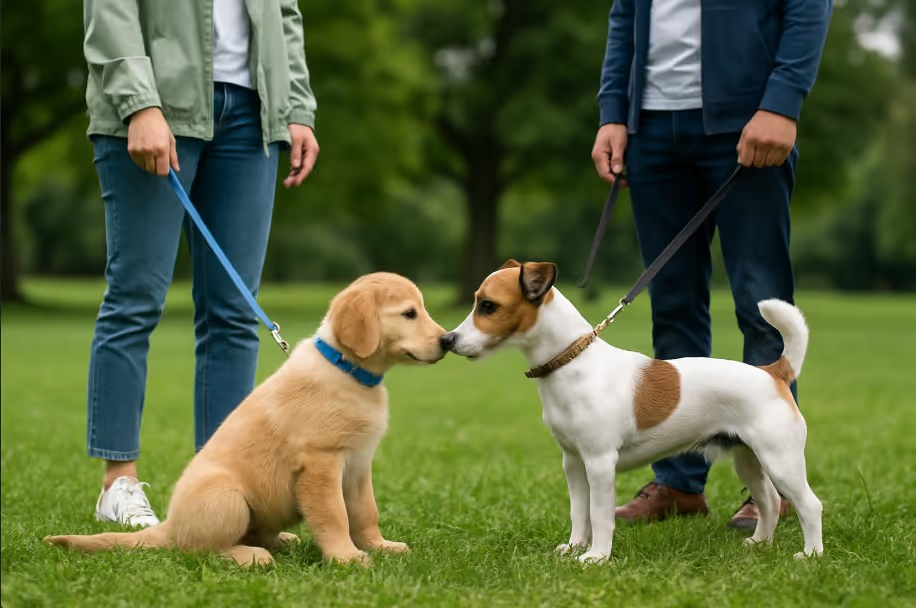Socialization during puppyhood is one of the most important steps in raising a calm and confident dog. Without it, puppies may grow up fearful, anxious, or even reactive to people, other animals, and new situations. This Canadian-focused guide breaks down when to start, how to approach socialization safely, and the step-by-step process for making it a positive experience.

Well-socialized puppies grow into dogs that are easier to train, safer in public, and more adaptable to new environments. Socialization doesn’t just mean play—it’s about teaching your puppy that the world is a safe and rewarding place.
The timing of socialization is crucial. Puppies are most receptive to learning about the world between 3 and 14 weeks old. After this window, new experiences can be more intimidating, making training harder.
Q: When should I start socializing my puppy?
A: Most experts recommend beginning between 3–14 weeks, starting at home and gradually introducing safe new experiences after vet clearance.
Your home is the safest place to begin. Expose your puppy to everyday sights and sounds so they learn to stay calm in familiar surroundings.
Once your puppy is comfortable at home, it’s time to meet people in a safe, controlled way.
Not all dogs are ideal playmates. Choose healthy, vaccinated dogs with calm temperaments for your puppy’s first interactions.
Exposure to different environments helps puppies adapt to the variety of places they’ll encounter in life.
Once your puppy is ready, structured experiences reinforce socialization.
Raising a puppy in Canada brings unique opportunities and challenges, especially with seasonal weather.
Socialization should feel safe and fun, but many owners unintentionally make it stressful.
Not every puppy adjusts easily. Some may show strong fear or reactivity despite your efforts.
Socialization sets the stage for a lifetime of confidence and calm behavior. By starting early, moving at your puppy’s pace, and keeping experiences positive, you’ll raise a well-adjusted companion who thrives in Canadian parks, cities, and homes.
Hit the trails with confidence! Our guide to the best dog leashes for hiking in Canada breaks down the top leash types - from hands-free to reflective - and shares expert tips for safe, comfortable adventures with your pup. Featuring trusted Canadian gear from Rocky Mountain Dog, this post helps you choose durable, trail-tested leashes built for every season and terrain.
Discover why Labradors thrive on fresh, whole-food meals tailored to their active lifestyle. This guide breaks down the best fresh dog food options for Labrador Retrievers in Canada, explains why balanced nutrition matters, and highlights top NutriCanine recipes made with human-grade ingredients. Learn how to transition your Lab safely to fresh food, manage their calories, and support long-term health - all while keeping mealtime easy and convenient with Canadian delivery from NutriCanine.
This article explores the best greeting exercises to stop dogs from jumping, barking, or biting when meeting people. It explains why dogs act out during greetings - often from excitement or overstimulation - and provides step-by-step training tips to promote calm behavior.
Discover practical and creative ways to keep your dog active indoors this winter. From games and training to DIY enrichment, keep your Canadian pup happy and healthy no matter how low the temperature drops.
When winter hits, knowing your dog’s limits is key. This vet-informed guide explains how cold is too cold for different breeds, the warning signs of overexposure, and simple tips to keep your pup warm and safe during chilly walks.